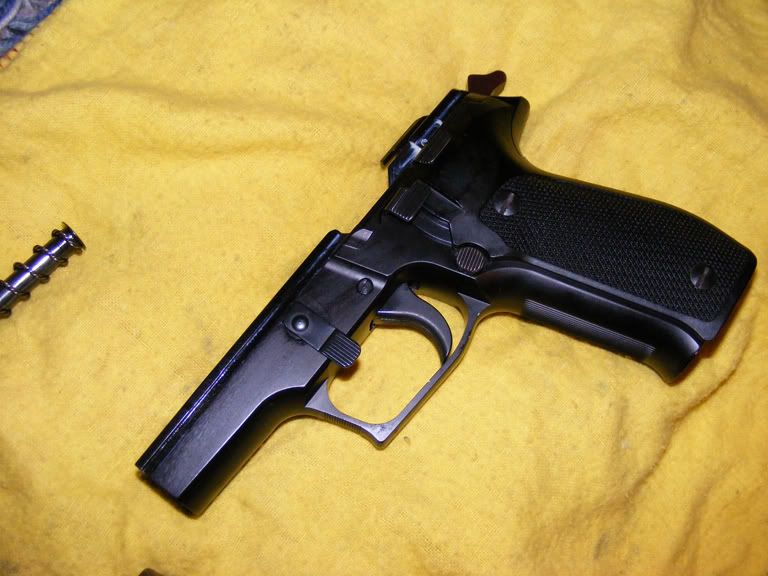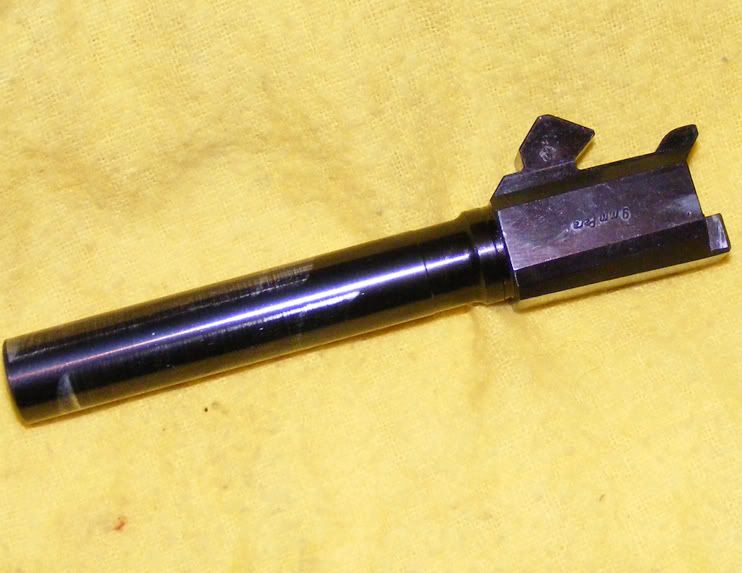Hers's the problem - it's not just about aluminum frames cracking. Other problems with Aluminum:
1. worn out feed ramps
2. worn frame rails
3. easy to scratch
4. surface is much more prone to holster wear, scratching, dings, etc, and you can't just buff or polish it out.
5. if an internal steel part breaks it very likely will chew up part of your aluminum frame - this happened in a PT-99 of mine.
6. corrosion - aluminum is not as corrosion resistant as SS. Where you really see this is in older aluminum guns where the surface treatement/paint etc. has deteriorated.
I do not understand why gun makers are still using aluminum in anything but dirt-cheap guns. I also don't understand why consumers let gun makers get away with using aluminum in guns. If it was Zamac (has aluminum as a componant of this alloy) instead of aluminum everyone would be poo-pooing on it as being cheap pot metal. But, because manufactures call it "aircraft" aluminum - well, it's got to be some goooooood stuff, right? That's why the FAA has strict regulations for checking airplanes for cracks and corrosion....because aircraft aluminum is such "good stuff".
If weight is a huge concern, which it shouldn't be in small handguns, then use polymer or maybe titanium. It doesn't have the look and feel of metal, but good polymer guns are far more durable than aluminum. Otherwise stick with stainless steel or carbon steel with surface treatment.
The real reason why gun makers use aluminum is because it is cheap. It's cheap to mill a billet of aluminum ... why???? Because it's soft.
As I said before, I prefer steel.
I only have experience with one AL framed pistol- my 1988 P226, in 9mm
The aluminum is not just raw aluminum. It is hard coat anodized. Mine had a weird circular rub mark in the hardcoat, at the takedown lever. A previous owner tried to...I don't know what they tried to do. Looks like they didn't know how to take the lever out but tried anyway
I made a slurry of kitchen softscrub and gunoil. 1:4 ratio. I rubbed the wear mark gently with a cloth and some of the slurry. The wear mark is all but gone
I agree that even hard coat AL is more prone to wear and scuffing, and obviously if steel gets a scratch it's not had it's 'armor' pierced
My 22 year old P226 has had lots of rounds through it, judging by the wear on the outside of the barrel. No 'dip' in the barrel though. The slide has minor wear at the front, looks like it saw a little holster duty. Inside of the (steel) slide has wear, you can see the matching wear on the side of the barrel at the '9mm para' rollmark. There are a few- very few- small chips out of the ano on the frame rails. And that's it. The milky spots in the photo below are from the lube I use, it's not wear. The chips are so small you can't see them in a photo taken that far away.
The barrel s/n matches the frame, and the barrel tells the story on rounds fired. This was no safe queen
While again, I prefer steel firearms, I have to say that my Sig is a fantastic pistol and has very little wear for any 22 year old pistol that has seen the level of use it has- steel or AL frame. can't say enough great things about that P226. I see no problems with that pistol having an AL frame. I'd prefer steel; I like the look of blue better, it's a nice feel-good knowing the frame is steel and the mass would soak up more recoil, not that the P226 in 9mm has a ton of it. I would not hesitate to buy an AL framed pistol if it was made as well as my P226- but if the identical pistol sold for the same price with a steel frame, I'd buy the steel pistol. That's just my preference


